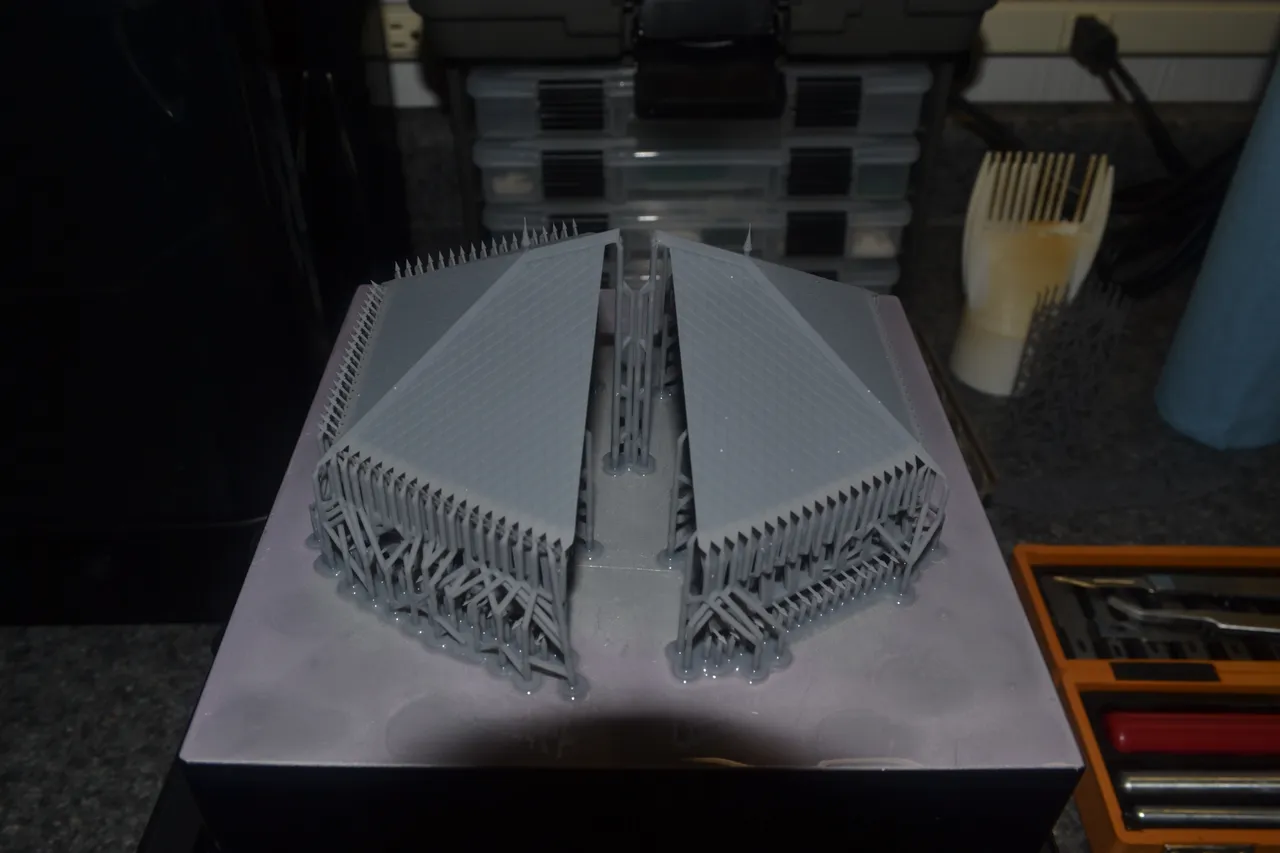
English
Русский
I meant to post this two days ago, but I was otherwise occupied. Anyway, I've been busy for the past few days, preparing some more content to share. I recently decided to print two different versions of the tea room on the Tower of the Eyes. These models are so big in 1:220 scale that, if I were to print them in a 25-micron layer thickness as I usually do, the build time would have been 23 hours.
Я собирался написать это позавчера, но был занят другими вещью. В любом случае, последние несколько дней я был занят, готовя ещё коё какой контент для публикации. Недавно я решил напечатать две разные версии чайной комнаты на Башне Очей. Эти модели такие большие в масштабе 1:220 что, если бы я напечатал их слоями толщиной 25 микрон, как я обычно делаю, время печати составило бы 23 часа.
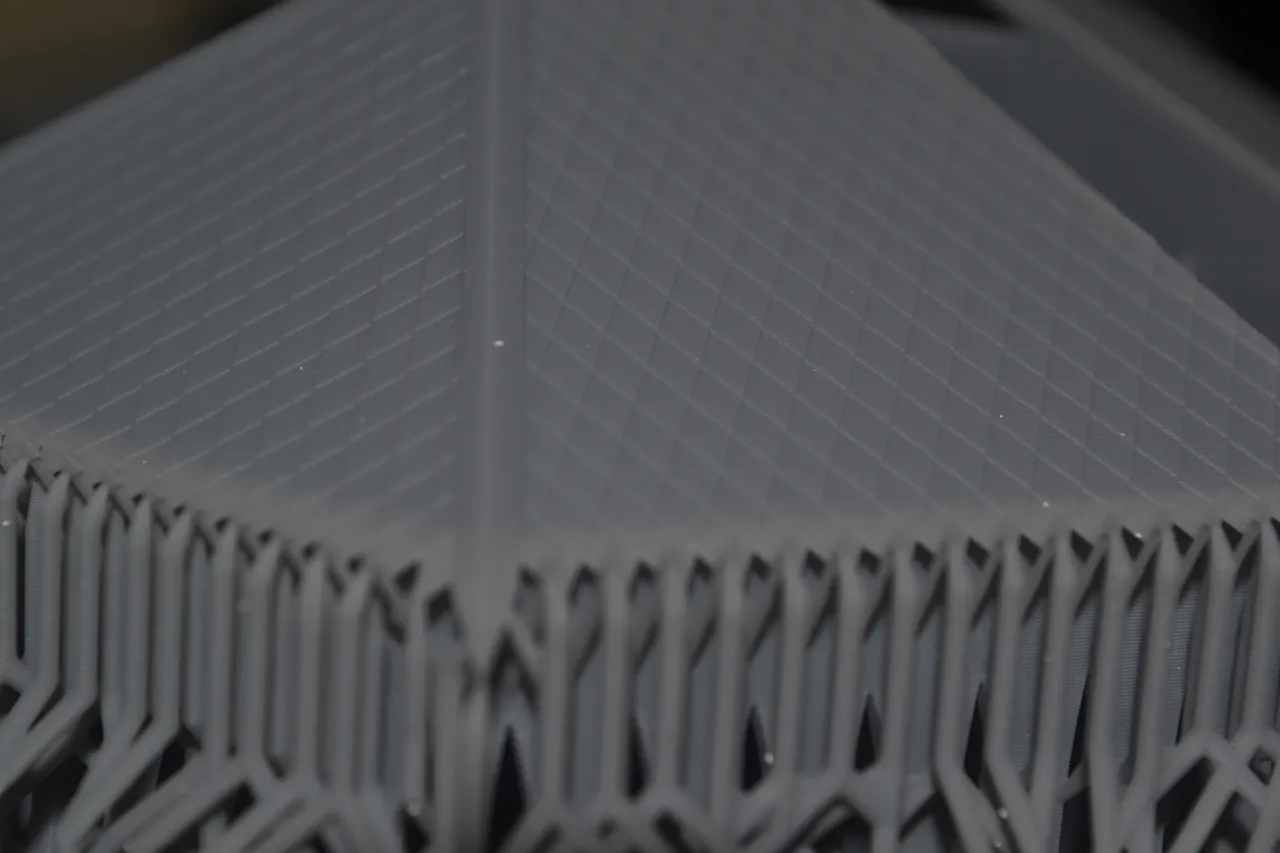
A recent addition to my printer's software, however, is "adaptive layer thickness." This means that areas of relatively low detail will print with thick layers for speed, and areas of high detail will print with thinner layers. In this print job, the layers varied from 25 to 160 microns, with the thickest layers in the main walls of the structure. By selecting adaptive layers, I was able to reduce the print time from 23 hours to 7.
Однако недавним дополнением к программному обеспечению моего принтера является "адаптивная толщина слоя." Это означает, что зоны с относительно низкой детализацией будут печататься толстыми слоями для скорости, и зоны с высокой детализацией будут печататься более тонкими слоями. В этом задании печати слои варьировались от 25 до 160 микрон, причем самые толстые слои находились на главных стенках структуры. Выбрав адаптивные слои, я смог сократить время печати от 23 часов до 7.
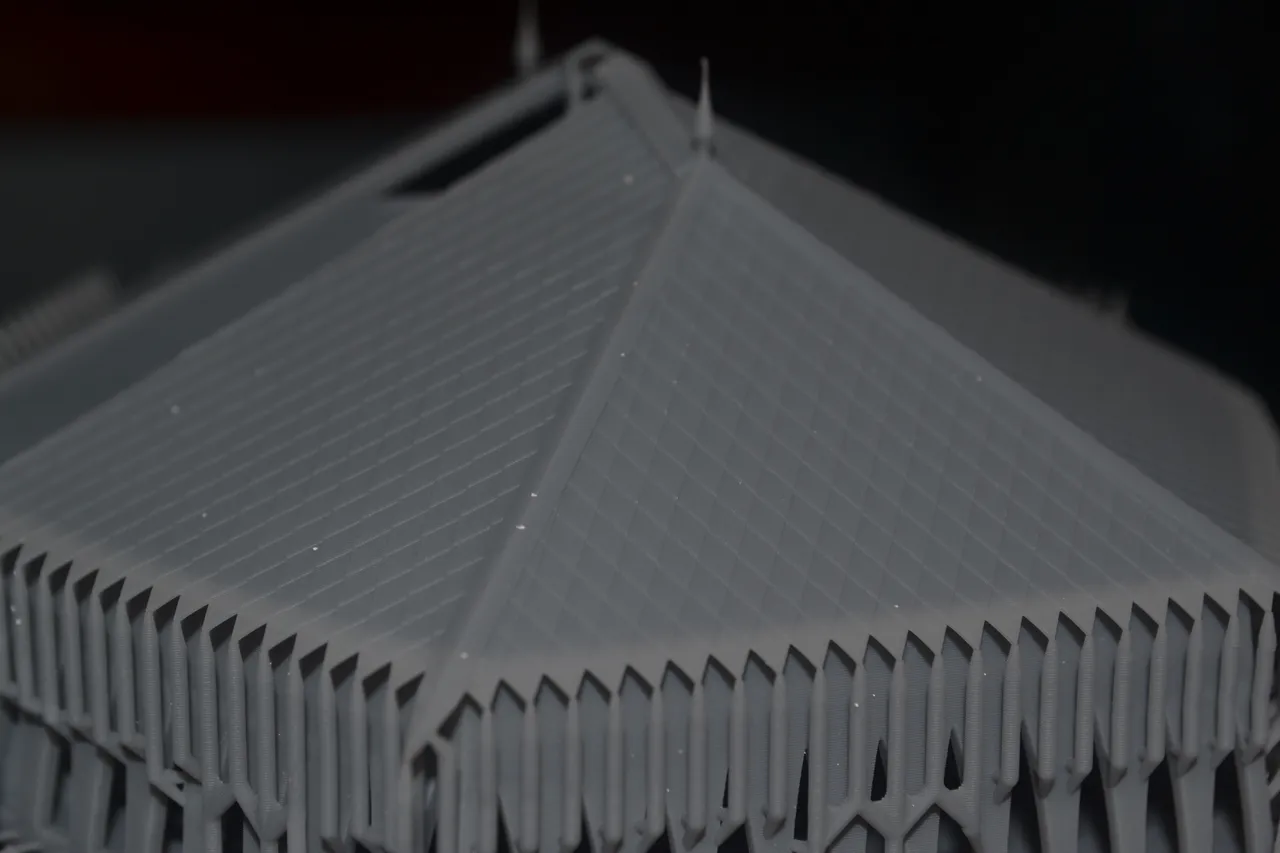
You may be able to make out the print lines in these pictures, which is unusual for the models that I share. Typically, print lines are visible on only the very slightest of slopes, such as the fenders on the SU-100Y or the upswept bow deck of a Pallada-class cruiser.
Возможно, вы сможете различить линии печати на этих фотографиях, что необычно для моделей, которые я показываю. Обычно, линии печати видны только на самых незначительных склонах, например, крылья на СУ-100Y или поднятая носовая палуба крейсера класса "Паллада".
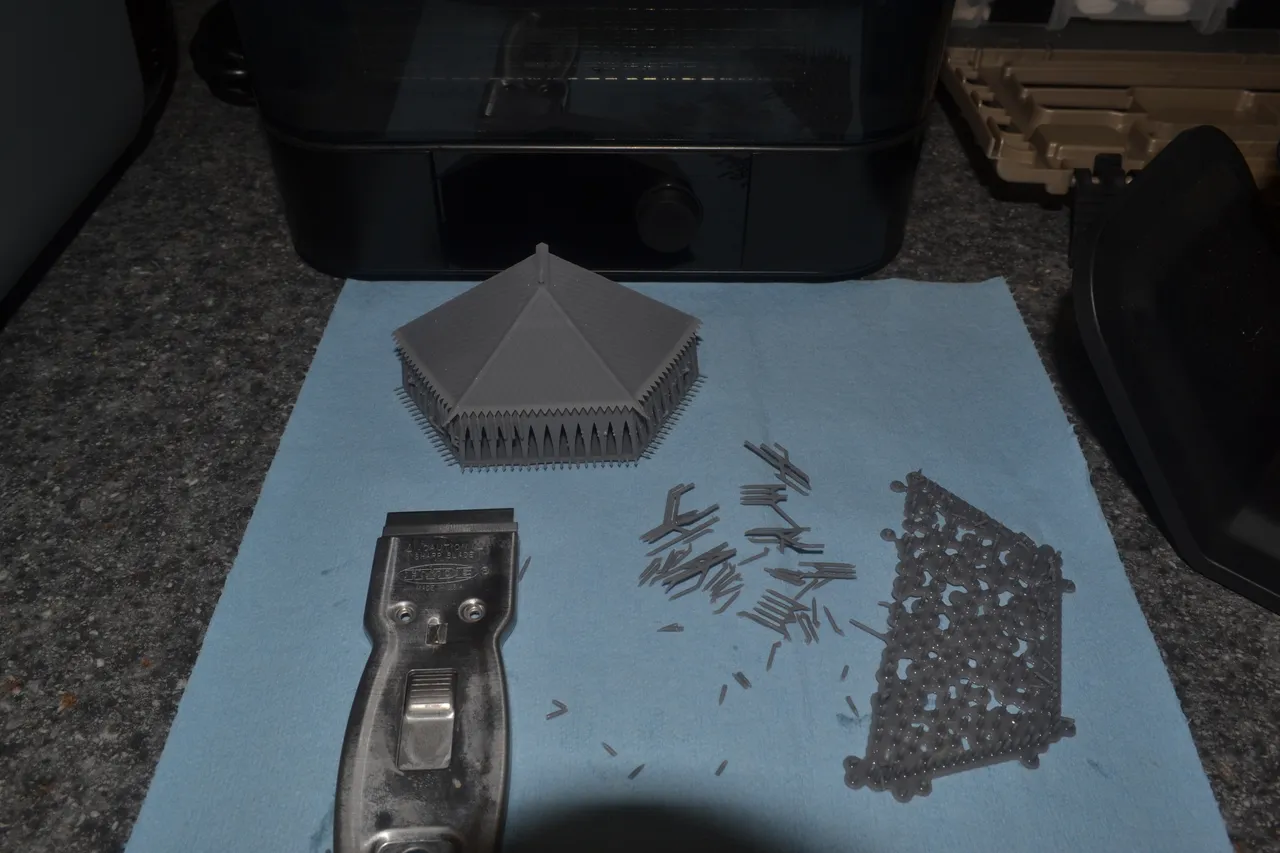
I printed two versions, one as I originally designed it, and one without the spikes along the top. I was concerned about being able to keep those thin features intact while removing the support structures. As it turns out, there were no problems, and the post-processing is so easy, that I will design a similar model to demonstrate the process with.
Я печатал две версии, один, как я его изначально спроектировал, и один без шипов сверху. Я беспокоился о том, чтобы сохранить эти тонкие элементы неповрежденными при удалении опорных структур. Как оказалось, проблем не возникло, а постобработка настолько проста, что я спроектирую аналогичную модель для демонстрации процесса.
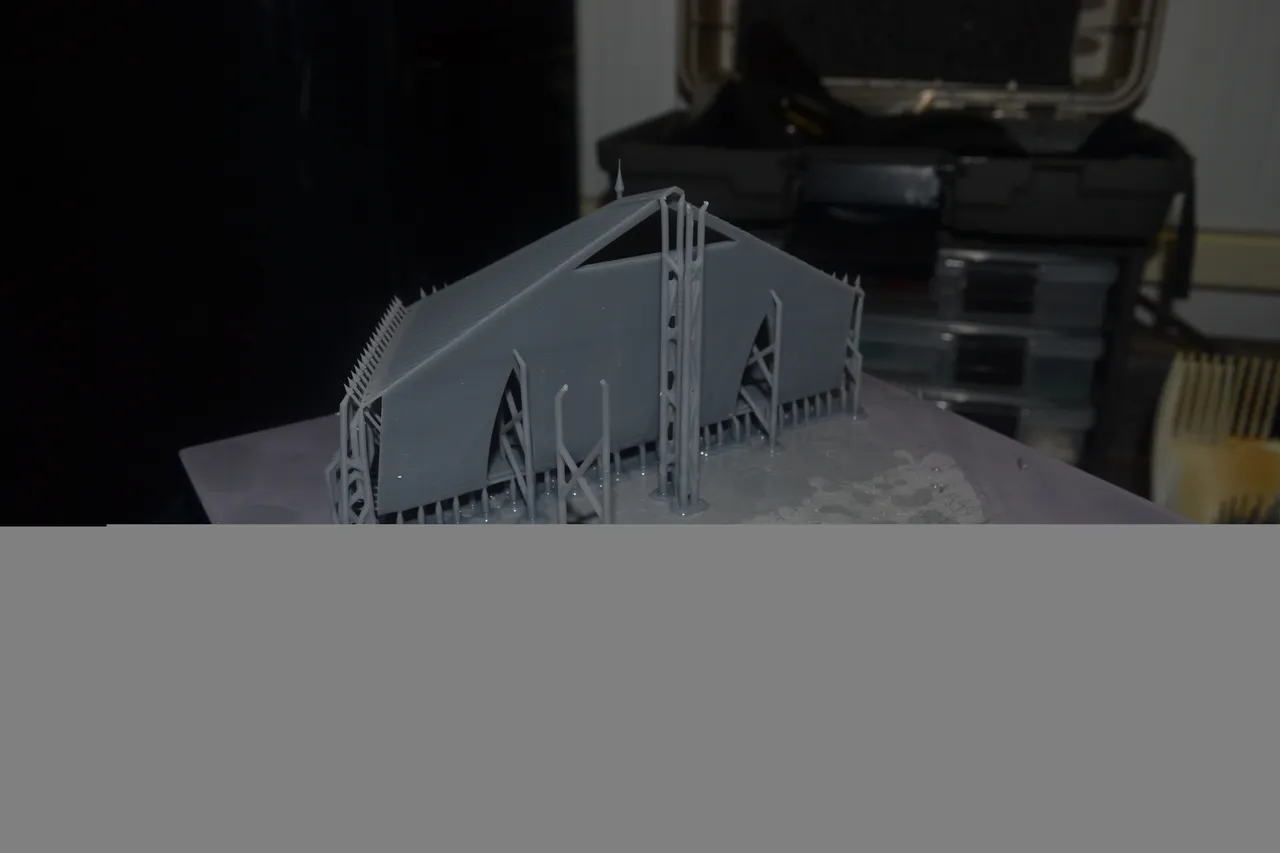

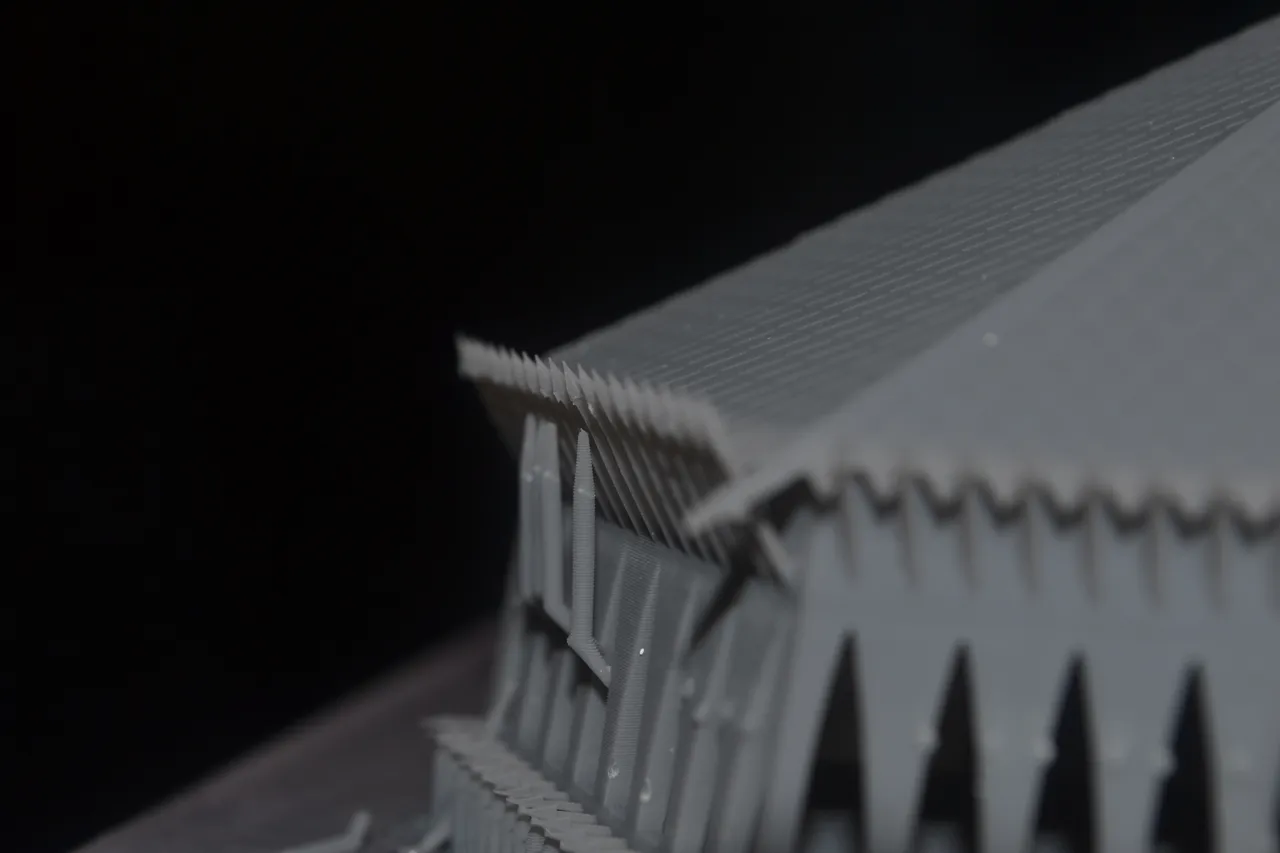

Here are all the supports that I removed. Perhaps I'll find a use for them.
Вот все опоры, которые я удалил. Возможно, я найду им применение.
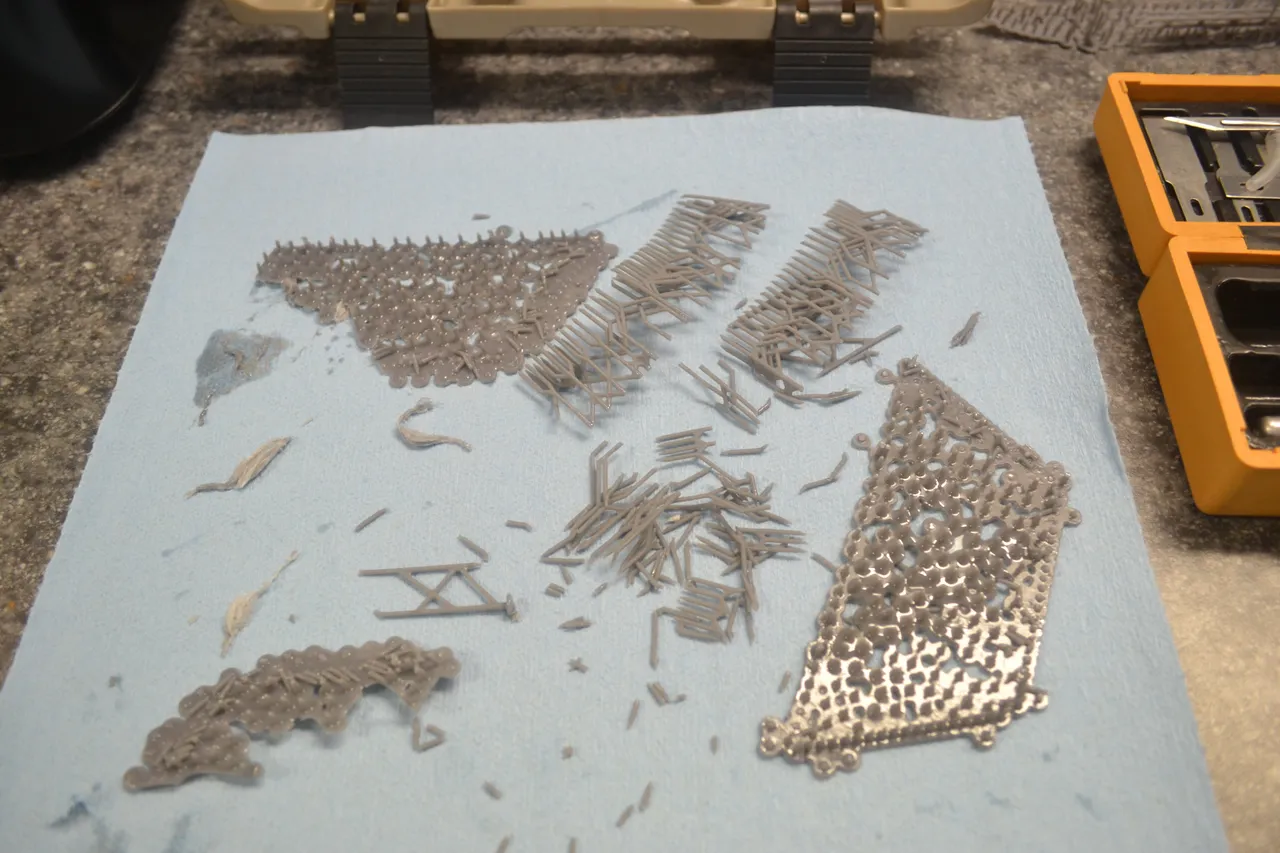
These models aren't ready for curing, I just put them here to get them out of the way while I cleaned up my workbench.
Эти модели не готовы к отверждению, я просто положил их сюда, чтобы убрать с дороги, пока буду убирать свой скамейке.

What should I work on next? I still have work to do on the Tower of the Eyes, but I also have another airship planned. Actually, I have three and-a-half planned: Argo, Talos, Solhanna, and Alena Zdarkova (the last two are the same class).
Над чём мне следует работать дальше? Мне всё ещё нужно поработать над Башней Очей, но у меня также запланирован еще один кораблёт. Вообще-то, у меня запланировано три-с-половиной: Арго, Талос, Солханна, и Алена Здаркова (последние два относятся к тому же классу).
